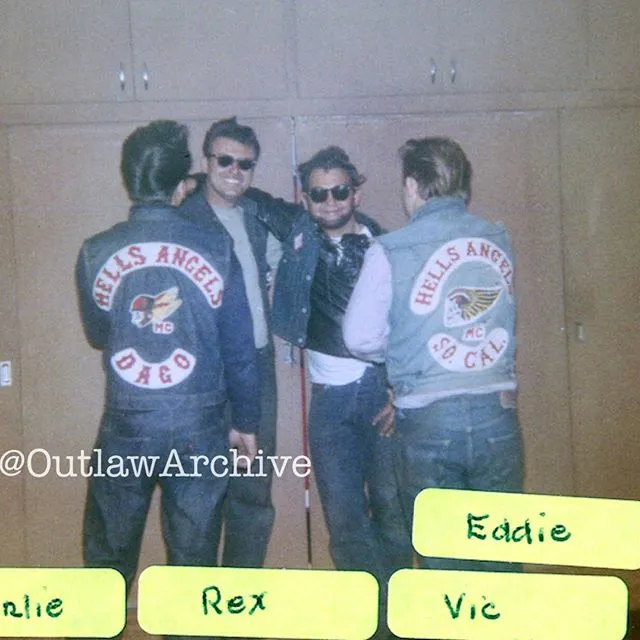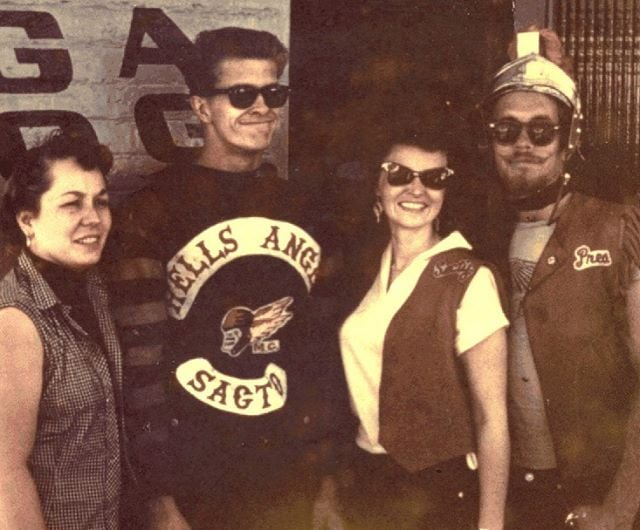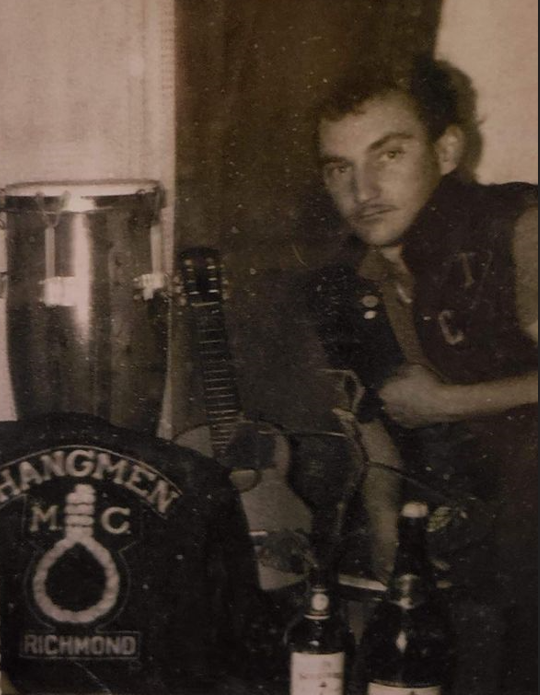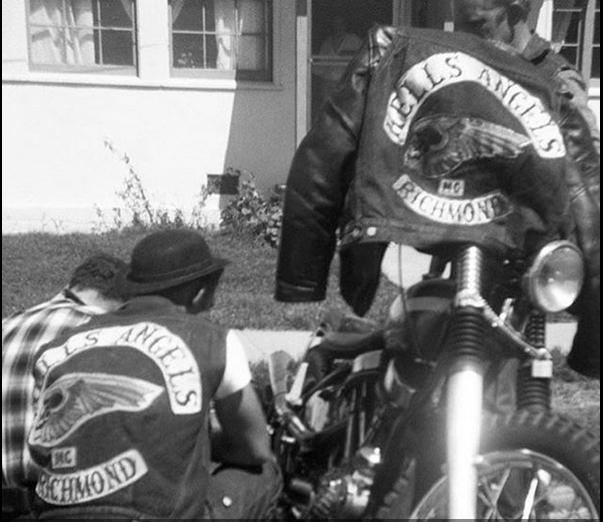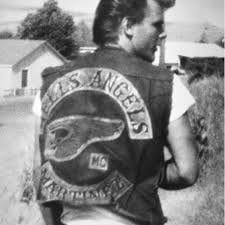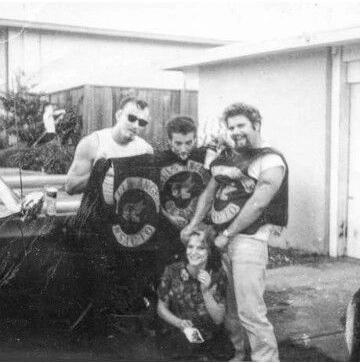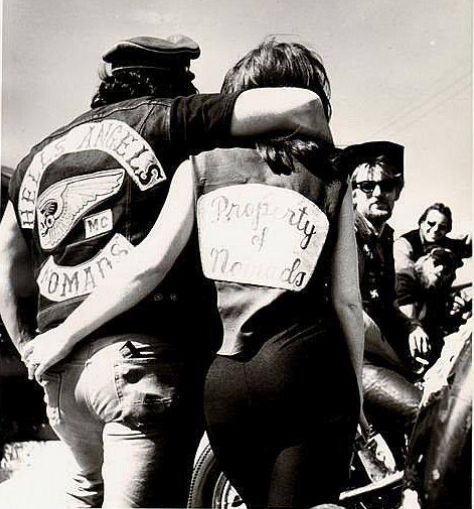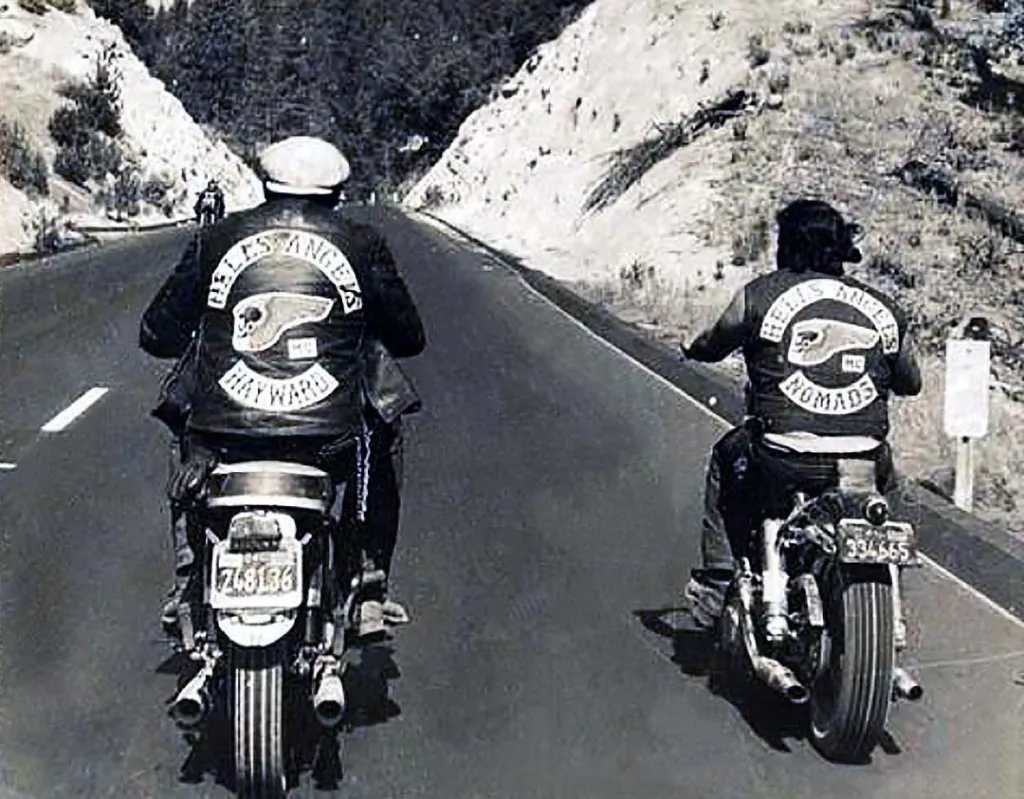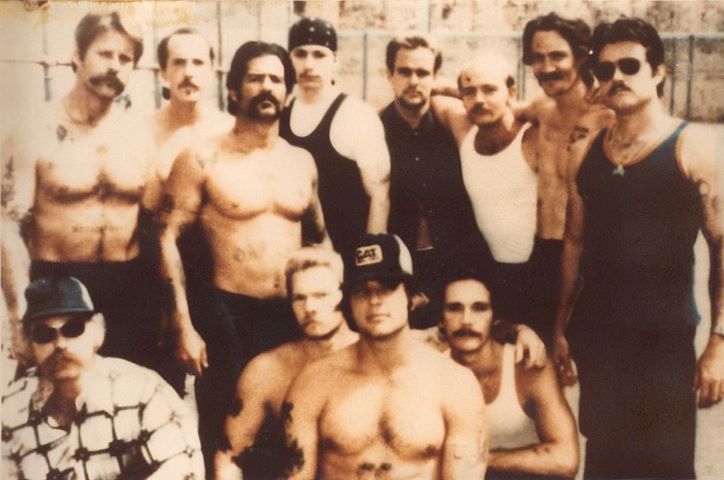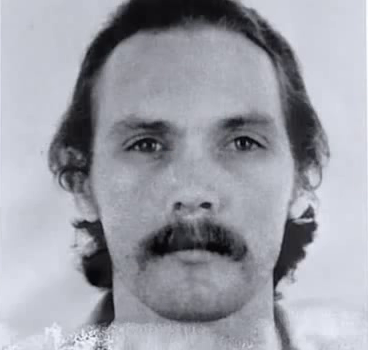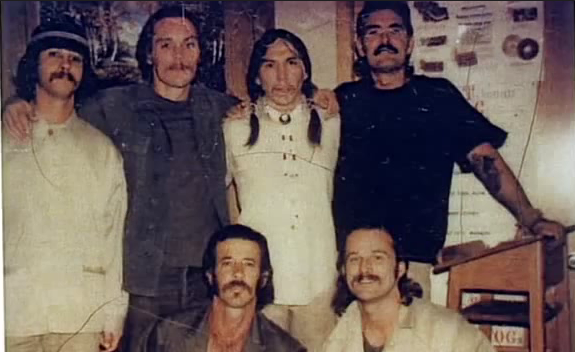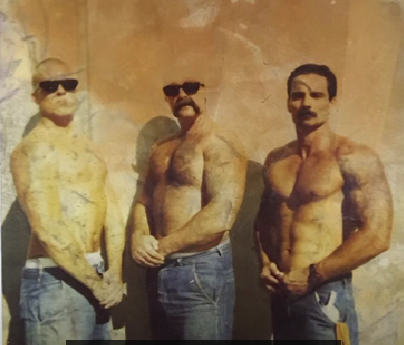Let us go back to the trial testimony of Paul S. Dobreff, program manager in California Institute for Men at Chino and in 1972 prison gang expert witness for the prosecution in the murder trial of Fred Mendrin, member of the Aryan Brotherhood, and Donald Hale, member of the American Nazi Party.
According to Dobreff the Aryan Brotherhood was formed in Folsom by Red Fenton, Edward Vaughn, Gino Maher and the brothers John and James Schreckengost. But who were they?
Red Fenton
The writer and former convict Edward Bunker knew of Red Fenton and sort of crossed paths with him. Bunker writes in his prison memoirs:
Locked up in San Quentin was Red Fenton who had killed a man in San Quentin fifteen years earlier and had been in the attempted breakout of Folsom in ’61, when the visiting girls’ choir was taken hostage. After going to court and getting a new five year to life sentence, and spending several years in the Folsom adjustment center, he had been transferred to San Quentin and given a chance on the mainline. His reputation preceded him. Weaklings were asking for protection by the score, so he had been locked up and remained locked up for two years. L.S. (Red) Nelson, San Quentin’s Warden, wanted to get rid of him and was willing to take me in exchange. So Red Fenton came back to Folsom and I rode the bus to San Quentin, which was always my joint.
Edward Bunker is not always the most accurate prison historian. But 27-year old career criminal Farrel H. “Red” Fenton did in October 1960 stab fellow San Quentin convict Victor Ybarra to death in the prison gymnasium while they and some hundred other convicts were watching a broadcast of the fifth game in the 1960 World Series between the New York Yankees and the Pittsburgh Pirate. And Red Fenton did participate in the hostage taking of a visiting choir in Folsom, but that was in 1962 and the hostages were not girls, but male singers. Red Fenton was one of three kidnappers. The two others were none other than Edward Vaughn and Edward “Gino” Maher.
The Taking of the Choir
On November 26 1962 the 16-member visiting Bethel Choir had just finished their first hymn in Folsom’s prison chapel, when the three lifers armed with homemade weapons rushed in. Conrad N. Becker was a deeply religious convict. Becker was also a big man. He rose from his seat and with a “Praise God” rushed the attackers. Stabbed he fell mortally wounded to ground, but rose to his feet and again tried to stop his fellow convicts before the 41- year old, convicted burglar finally collapsed.
Thanks to Conrad Becker’s heroic acts most of the choir members had time to escape through the chapel’s sidedoors. Six choir members and Folsom’s prison chaplain were taken hostage and hustled into the chaplain’s office by the three armed desperados. For three and a half hour Red Fenton negotiated with the warden of Folsom and with Richard Magee, director of California’s prison system. Magee promised to ask the district attorny not to seek the mandatory death penalty for lifers convicted of assault with a deadly weapon. After Folsom convict Zachary Vaughn, brother of Edward Vaughn, implored the trio to trust Magee on his word, they gave up their weapons and surrendered.
Below: (L to R) Edward Vaughn, Gino Maher and Red Fenton after they released their hostages. Inserted: Murdered inmate Conrad Becker who tried to save the hostages.

Afterwards a brief press conference with the three convicts was arranged, but they had not much to say. They had no real complains against the prison and wouldn’t comment on their motive for the hostage taking. It couldn’t have been a real escape attempt because any convict in California knew of the “no hostage”-policy of the state’s prison system, enacted in 1937 after the warden of Folsom was taken hostage and murdered in a bloody escape attempt.
Despite the effort of director Magee the district attorny charged Fenton, Vaughn and Maher with first degree murder of Conrad Becker. According to press reports Becker had fingered Maher as the stabber, but the prosecutor could in court not prove who did the deed and in April 1962 got a hung jury. In June 1963 all three convicts pleaded guilty to second degree murder, just as Red Fenton had done in April 1961 in the Ybarra murder case.
Edward Vaughn
Though Red Fenton was one murder conviction ahead of both Edward Vaugh and Gino Maher, Zachary Vaughn’s brother seems to have been the real lifetaker of the three. In March 1962 he stabbed Benny Slankard to death in California Medical Facility at Vacaville, the first such incident in the guidance center. Edward Vaughn succesfully pleaded innonce in that case. In June 1967 he stabbed his cellmate in Folsom, Delbert “Joe” Blow, to death. For that Edward Vaughn was convicted of assault with a deadly weapon. In December that same year Edward Vaughn and Ronald Lancaster assaulted a Folsom guard in an effort to get to fellow convict Fred Castillo. For that Edward Vaughn got sentenced to death in 1968.
During Vaughn’s trial for his life Red Felton took the stand and claimed that it was he who had stabbed Conrad Becker to death. The prosecutor rebutted with a confession to several armed robberies and first degree murder of both Becker and Benny Slankard, written in 1964 by Edward Vaughn. The admitted killer then asked the jury for the death sentence and got it. California’s supreme court affirmed his guilt, but reversed the sentence. Vaughn defended in 1969 himself in the new penalty trial and lost. In 1974 California’s supreme court affirmed the sentence, but commuted it to life in prison since California two years earlier had abolished the death sentence.
Ronald Lancaster, who was desribed as the “youngest and smallest” prisoner in Folsom, was tried in a seperate trial. Edward Vaughn did his utmost to take full blame for the young convict’s action during the incident, but Lancaster was nevertheless found guilty of assault on an officer and holding him hostage. Everybody agreed that Vaughn had been the driving force and that his motive was revenge for some snitching he thought Fred Castillo had done. And Edward Vaughn was almost certainly the driving force behind the conspiracy between members of the Aryan Brotherhood, the Mexican Mafia and the American Nazi Party that in 1972 finally killed Castillo in Chino. During the subsequent murder trial Vaughn testified that he in 1968 had helped organize the Aryan Brotherhood in San Quentin.
The Schreckengosts
In his prison memoirs Edward Bunker also briefly mentions a certain Shorty Schreckengost. According to Bunker this convict had once been assaigned to paint the interior of California’s gas chamber in San Quentin, and prison rumors had it that he had signed his name under one of the chairs. If the story is true it may say something about James “Shorty” Schreckengost. As a young convict he and Robert Harmon ran a protection rackett in Soledad. When one prisoner didn’t give in they stabbed him, Harmon in the back and Schreckengost in the chest and abdomen. Their victim survived, but as a lifer Harmond was sentenced to death and in August 1960 executed in the gas chamber.
Shorty Schreckengost went to prison in 1956 for writing bad checks. In 1961 his younger brother John went to prison for first degree robbery. In 1966 they were both in San Quentin and charged with a brutal attempted murder of another convict. Shortly after their acquittal John injured his hand while beating yet another convict. In 1970 he was out on the street, leading a gang of armed robbers. He was caught after a ferocious gun battle that left one policeman and two robbers dead, one by his own hand. In 1978 older brother Shorty was injured in Folsom when he was shot with non-lethal ammunition while fighting a Mexican convict.
In January 1980 former Folsom convict Duane Williams fingered in court Shorty Schreckengost as the Aryan Brotherhood member who in 1974 introduced him in Folsom to Hells Angels leader Ralph “Sonny” Barger. According to the trial’s prosecutor Shorty had since left the Aryan Brotherhood.
To sum it all up, it seems that Paul Dobreff was right when he pointed Edward Vaughn out as one of the founding members of the Aryan Brotherhood, and Dobreff may also have been right about Shorty Schreckengost who at least was an early member of the Brand. But no evidence seems to corroborate that Red Fenton, John Schreckengost or Gino Maher – who’s only claim to fame was the hostage taking in 1962 – were members of the Aryan Brotherhood, let alone founding members. And almost all sources claim that the Aryan Brotherhood was formed in San Quentin and therefore not in Folsom.
Galloway and Mahone
However, we are here dealing with a prison underworld where court testimony is not neccessarily the truth. Let’s recall that the defense for Fred Mendring and Donald Hale did their outmost to have Paul Dobreff’s testimony thrown out of court. When that strategy didn’t succeed the defense called Edward Vaugn and Robert Galloway. Galloway testified that he formed the Aryan Brotherhood with 8 to 10 other convicts, and Vaughn testified that he in 1968 helped organize the group in San Quentin. So in actuality the testimonies from Vaughn and Galloway do not rule out that the Aryan Brotherhood was formed prior to 1968, nor that the secret brotherhood was formed in Folsom before it reached San Quentin.
Edward Bunker claims that Red Fenton was housed in Folsom adjustment center for years after the hostage taking in 1962. We may assumed that during the mid-sixties Edward Vaughn and Gino Maher were housed the same place. And it is quit possibile that the violent Schreckgost brothers during the same timeframe were transferred from San Quentin to the adjustment center in Folsom. And we know for a fact that Robert Galloway was housed in Folsom’s adjustment center, at least in the early 1970s.
In Folsom’s adjustment center Galloway was housed with Jack “Red” Mahone, who both former gang investigator Ricahed Valdemar and former gang member Ramon “Mundo” Mendoza claim was a co-founder of the Aryan Brotherhood. Now, if it could be estabished that all these convics – Red Fenton, Gino Maher, Edward Vaughn, John Schreckengost, Shorty Schreckengost, Bob Galloway and Red Mahone – were housed together in Folsom’s adjustment center sometime in the mid-1960s, we may very well have identified most of the 8 to 10 founding members of the Aryan Brotherhood.
***


